Integrating Climate Risks into Financial Planning: Key Insights for EU Companies
Climate risks cost Germany billions every year. Companies must integrate these risks into their...
By: Johannes Fiegenbaum on 7/29/25 11:25 AM

Understanding and Acting on Climate Risks – Success Comes with the Right Data Sources. Are you looking for free and reliable climate data? Here are five open-source platforms to help you analyze risks and comply with legal requirements such as the EU Taxonomy or CSRD:
These sources provide you with the foundation to better assess climate risks and plan effective measures. Whether for energy, agriculture, or real estate—these tools equip you for success. Leveraging these platforms not only supports compliance but also empowers organizations to make data-driven decisions in the face of climate change. For example, the Copernicus Climate Data Store is widely used in the EU for regulatory reporting, while NASA Earthdata underpins global supply chain risk mapping for multinational corporations (source).
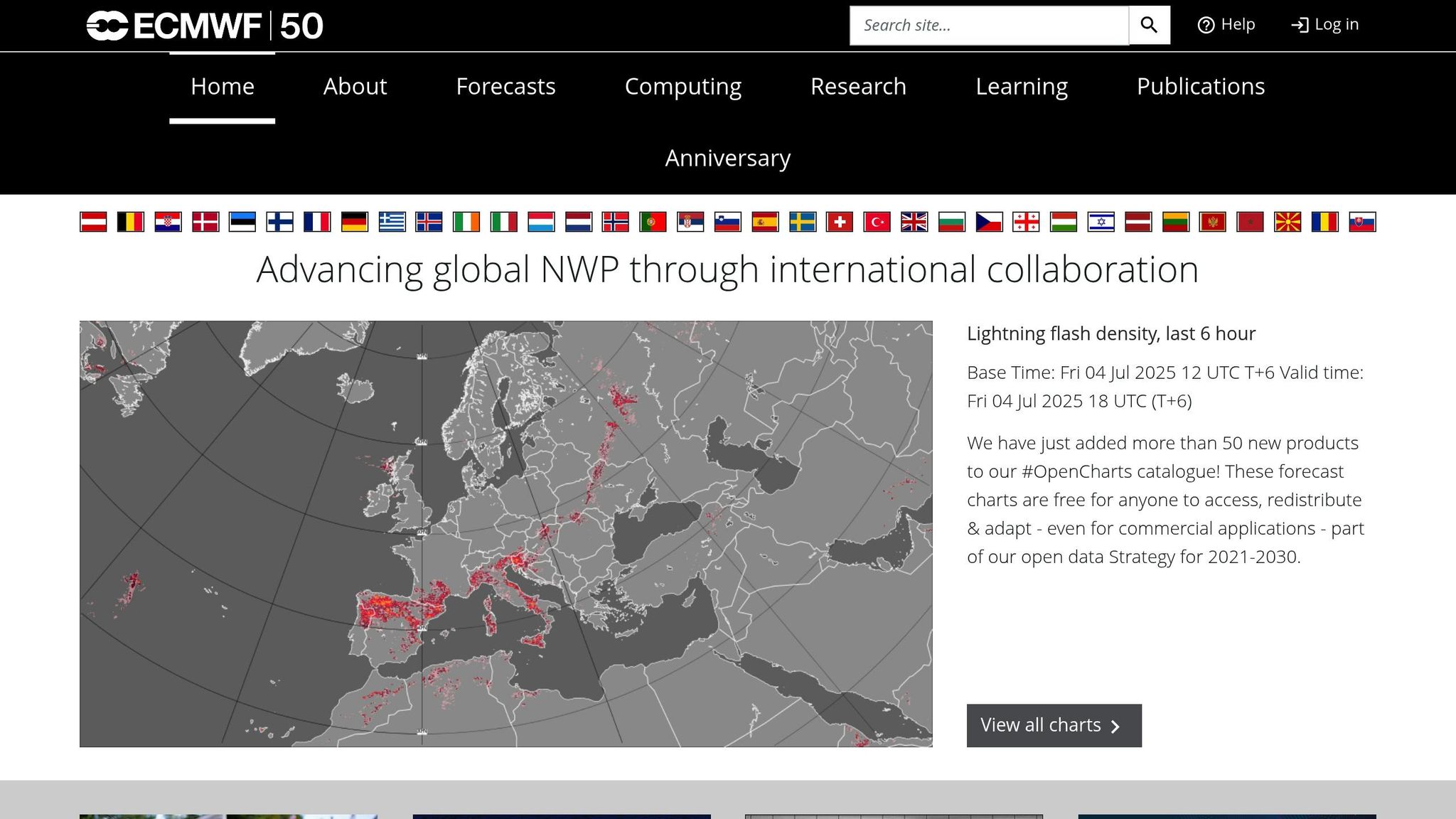
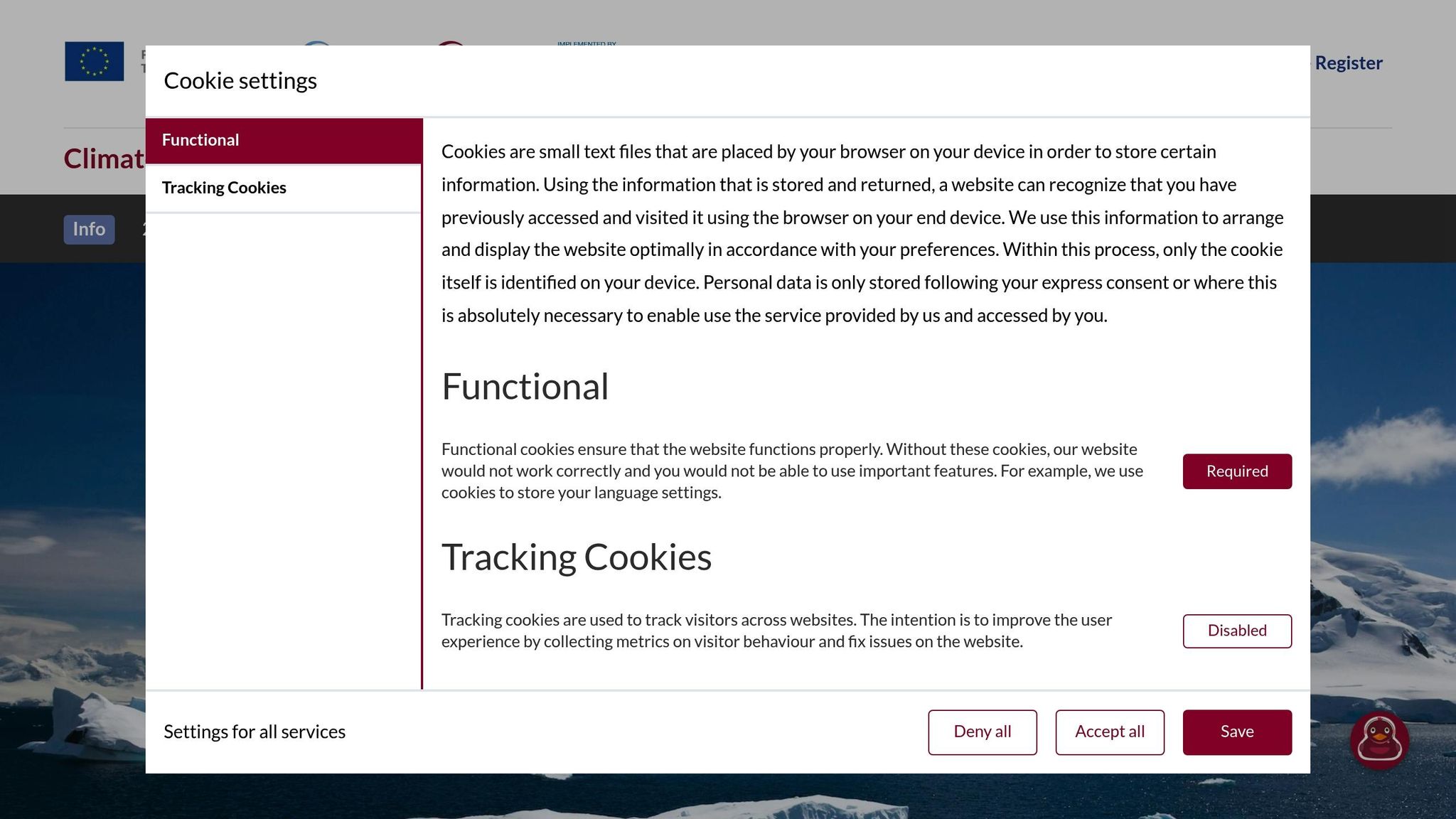
The Copernicus Climate Data Store (CDS) is a central European platform for climate data, offering German companies free access to comprehensive climate information. With over 120,000 registered users worldwide, the platform has established itself as a reliable source for professional climate risk analyses. Registration is free of charge. Below, we take a closer look at the key features and capabilities of CDS.
The CDS provides climate data at global, continental, and regional levels. Companies can obtain precise information ranging from individual federal states to all of Europe. The platform enables the processing of large data volumes and, using various data sources, allows for simple visualizations tailored to different user groups.
CDS offers a broad selection of climate data, including climate projections, reanalyses, satellite observations, seasonal forecasts, and sectoral climate indices. Of particular note are the ERA5 data, available on a grid of about 31 km, which can optionally be downscaled to 0.25°. Data are stored in binary formats such as GRIB and NetCDF. For detailed regional analyses, Climate Scale provides high-resolution climate change projections for various regions worldwide.
To use CDS data effectively, companies should first define the relevant climate variables and the required spatial and temporal resolution. From 2025, Vortex Climate Scale will provide high-resolution historical simulation data (based on ERA5) as well as forward-looking projections (CMIP5/6). These data help identify important changes and trends in climatic conditions and better assess the physical risks of climate change.
CDS data provide a valuable foundation for strategic risk assessments related to climate change. By combining historical and future-oriented datasets, companies can make informed decisions and adapt their strategies accordingly. In addition, the C3S National Collaboration Programme (NCP) supports the use of C3S climate data in EU member states and Copernicus countries, promoting their application and integration into national strategies. The CDS is also recommended by the European Environment Agency for climate risk disclosure under the EU Taxonomy (source).
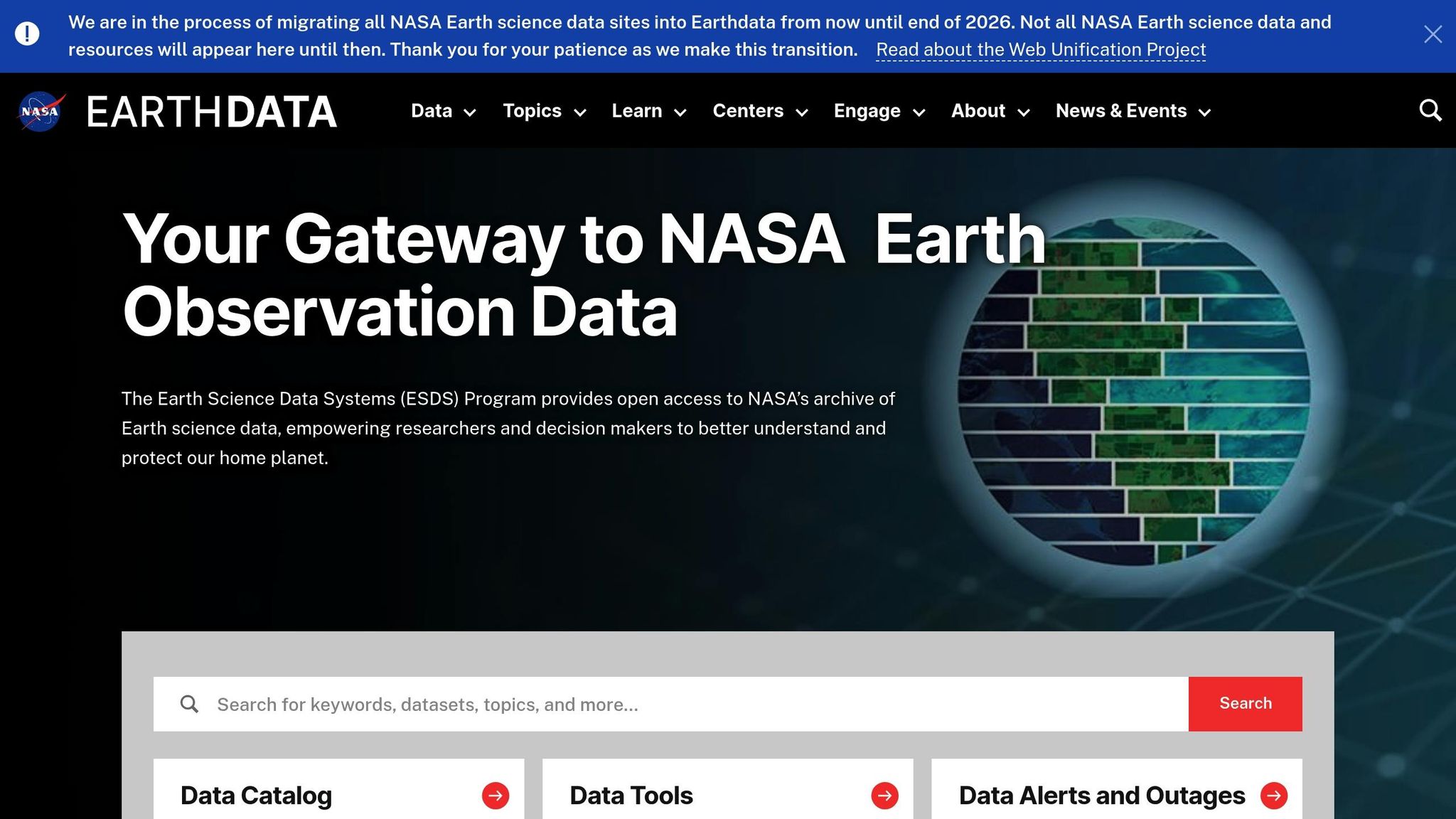
NASA Earthdata offers one of the most extensive free data collections for climate risk analysis. With over 128 petabytes of Earth science data and more than 8 million registered users worldwide, this platform has become an indispensable foundation for scientifically sound climate analyses. It provides free access to data from satellites, aircraft, and models, covering climate, weather, land, oceans, and the atmosphere. This diversity enables precise global monitoring of climate risks.
The platform offers global satellite coverage, including remote and hard-to-reach regions. For German companies with international supply chains or locations in climate-sensitive areas, this is particularly useful, as it supports continuous monitoring of climate risks at both local and global levels.
NASA Earthdata provides various datasets: MODIS and VIIRS deliver daily global coverage, while Landsat offers high-resolution images at intervals of 8 to 16 days. This is complemented by long-term historical data. For example, MODIS has been collecting information since 1999, Landsat data goes back to 1972, and GRACE-FO provides monthly updates on groundwater and ice mass changes.
All data are available in GIS-compatible formats and can be seamlessly integrated into existing analysis workflows. This enables companies to quickly identify trends and derive informed actions.
NASA Earthdata is ideal for environmental monitoring, disaster management, and GIS analyses. Companies can use it to observe seasonal developments, natural disasters, and long-term climate changes. GISTEMP data is updated monthly and based on NOAA GHCN v4 for meteorological stations and ERSST v5 for ocean data. Notably, NASA’s datasets have been instrumental in tracking global temperature anomalies and drought events, as highlighted in the IPCC’s Sixth Assessment Report (source).
NASA Earthdata datasets support companies in meeting German ESG requirements by providing detailed temperature analyses and sustainability metrics. GISTEMP v4 data is available in netCDF and Zarr formats and includes monthly temperature anomalies for climate risk assessments.
With the Earthdata Search function, companies can filter by location, time period, and dataset type. This makes it possible to create time series analyses to identify trends and make informed decisions.
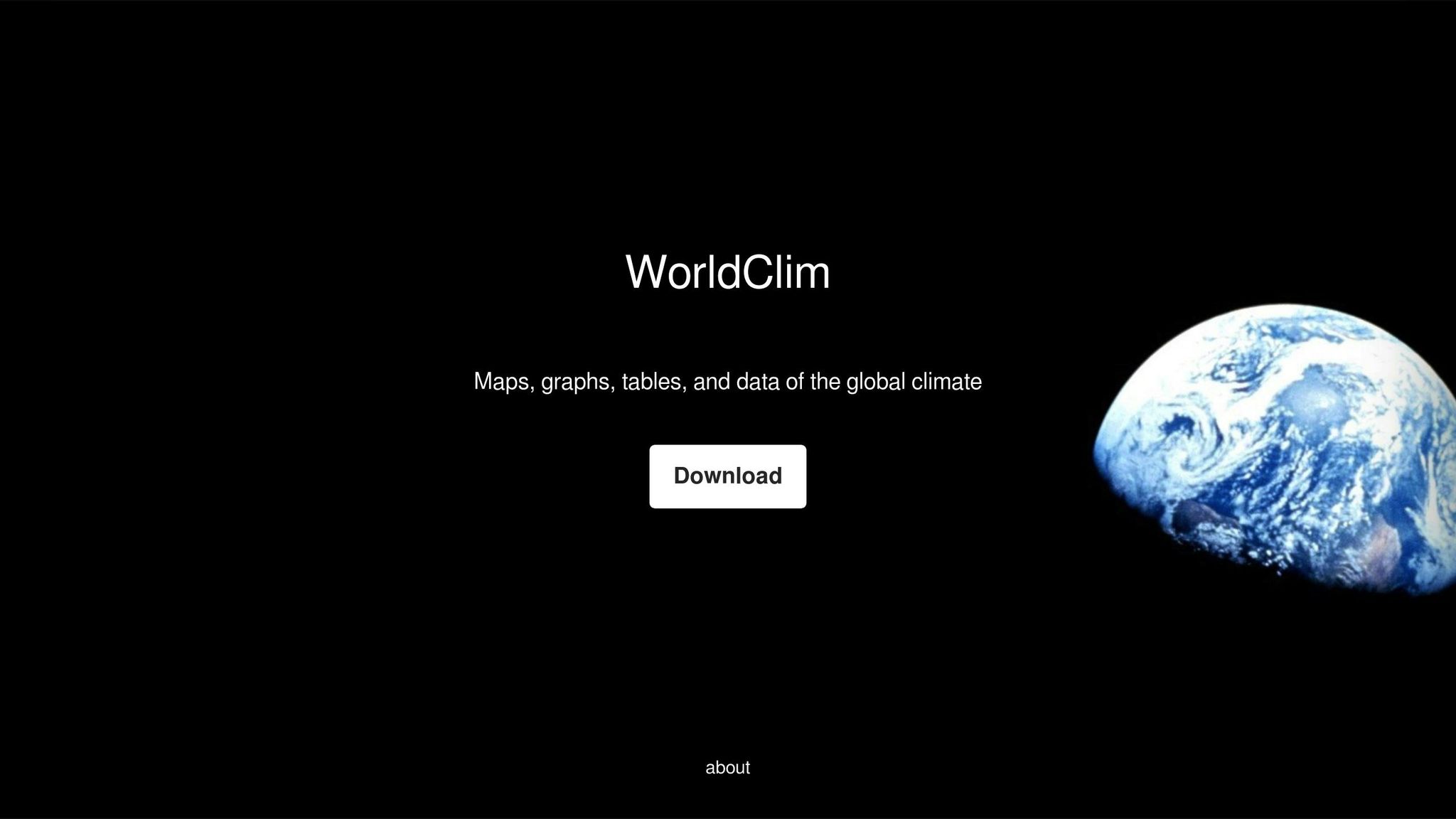
WorldClim is one of the most precise global climate data collections for spatial analyses, offering high-resolution climate data. The first version of WorldClim has been cited over 5,200 times, underlining its importance in climate research. For German companies, both historical data and future projections are particularly valuable for creating robust risk analyses.
WorldClim data covers the entire globe, with a special focus on Europe and detailed information for Germany. As part of a climate impact and risk analysis in 2021, WorldClim data was used to divide German regions into seven climate zones, identify hotspots, and map climate changes in German cities compared to similar regions in Europe. These maps received wide attention in the media and among relevant stakeholders.
WorldClim provides a variety of climate data, including monthly values for minimum, mean, and maximum temperatures, precipitation, solar radiation, wind speed, and water vapor pressure. The platform also offers 19 bioclimatic variables used in ecological modeling and risk analyses. Data is available at various resolutions: from 30 seconds (~1 km²) up to 10 minutes (~340 km²). Temperature values are given in °C×10 and precipitation in millimeters. For future projections, WorldClim uses CMIP6 models with different SSP scenarios. A comparative study in Europe showed average deviations of +0.2 °C for mean annual temperature and -48.7 mm for annual total precipitation. These precise data open up numerous possibilities for risk management (source).
With WorldClim, companies can conduct detailed climate risk analyses. This allows them to specifically assess the vulnerability of sites, supply chains, or assets to risks such as floods, heatwaves, or droughts. The 19 bioclimatic variables also enable comprehensive ecological studies and scenario analyses to better predict climate-related risks. Sensitivity analyses can help assess the accuracy of empirical models, especially in mountainous regions where distortions are more common.
In addition to practical applications, WorldClim supports German companies in achieving their climate goals—such as reducing greenhouse gas emissions by 65% by 2030 (compared to 1990) and achieving climate neutrality by 2045. In combination with other open-access tools like Geoportal.de, companies can comprehensively analyze their climate risks and integrate the results into existing ESG strategies. However, effective use of the data requires specialized knowledge, which should be developed internally or supplemented with external expertise.

Since July 25, 2017, when a legal amendment came into effect, the DWD has been providing extensive climate data free of charge. As the national meteorological authority, the DWD is required to provide weather and climate information for Germany. This legal basis makes DWD data a reliable resource for German companies. Below, we take a closer look at the geographical coverage, data types, and their practical applications.
DWD data focuses primarily on Germany but also includes international information in some datasets. With its dense network of measuring stations, the DWD covers the entire country. Station density varies depending on the measurement parameter. Some data series, such as measurements in Hohenpeißenberg, date back to 1781. This historical data enables long-term observation of climate trends and robust risk forecasts.
The Climate Data Center (CDC) of the DWD operates around 400 active climate stations, 2,000 precipitation stations, and 1,200 phenological stations. Measurement intervals range from one minute to multi-year time series. Spatially, data ranges from station measurements to grid fields with resolutions of 1 km × 1 km for Germany and 5 km × 5 km for Europe. This level of detail allows companies to accurately assess local climate risks.
Parameters recorded include air temperature, precipitation, humidity, wind speed, air pressure, and solar radiation. Derived values such as potential evaporation, soil moisture, and heating and cooling degree days are also provided. For specific applications, agrometeorological models, wind energy parameters with resolutions up to 200 m × 200 m, and TRY project data with hourly climate information are available.
The high-resolution DWD data is a valuable tool for local risk analyses. It helps assess the impacts of heavy rainfall, droughts, and extreme temperatures. Agrometeorological data, for example, support the assessment of crop yield risks and the planning of irrigation strategies. In the energy sector, wind energy parameters and solar radiation data enable robust analyses of renewable energy potential. TRY project data is useful for modeling urban microclimates and planning climate-resilient infrastructure.
In water management, precipitation data and derived parameters such as the drought index play a central role. They enable effective management of water resources and help minimize the consequences of droughts or floods. In addition, the DWD provides SIGMET reports in IWXXM format for German airports, complying with ICAO Annex 3 standards. This range of applications makes DWD data an indispensable tool in German climate risk management. According to the German Federal Ministry for Digital and Transport, DWD’s open data has significantly improved the accessibility of climate information for public and private sectors (source).
DWD Open Data is a key component of the German geodata infrastructure (GDI-DE) and meets the requirements of the INSPIRE directive as well as the standards of the Open Geospatial Consortium (OGC). Data is provided in accordance with the “GeoNutzV” regulation, allowing unrestricted use with source attribution. This clear legal basis not only provides companies with security but also ensures regulatory compliance.
Since 2014, the range of publicly accessible climate data has been continuously expanded. After the 2017 legal amendment, further high-resolution observational data was added. However, companies should carefully review station metadata and dataset descriptions to identify possible inhomogeneities in time series.
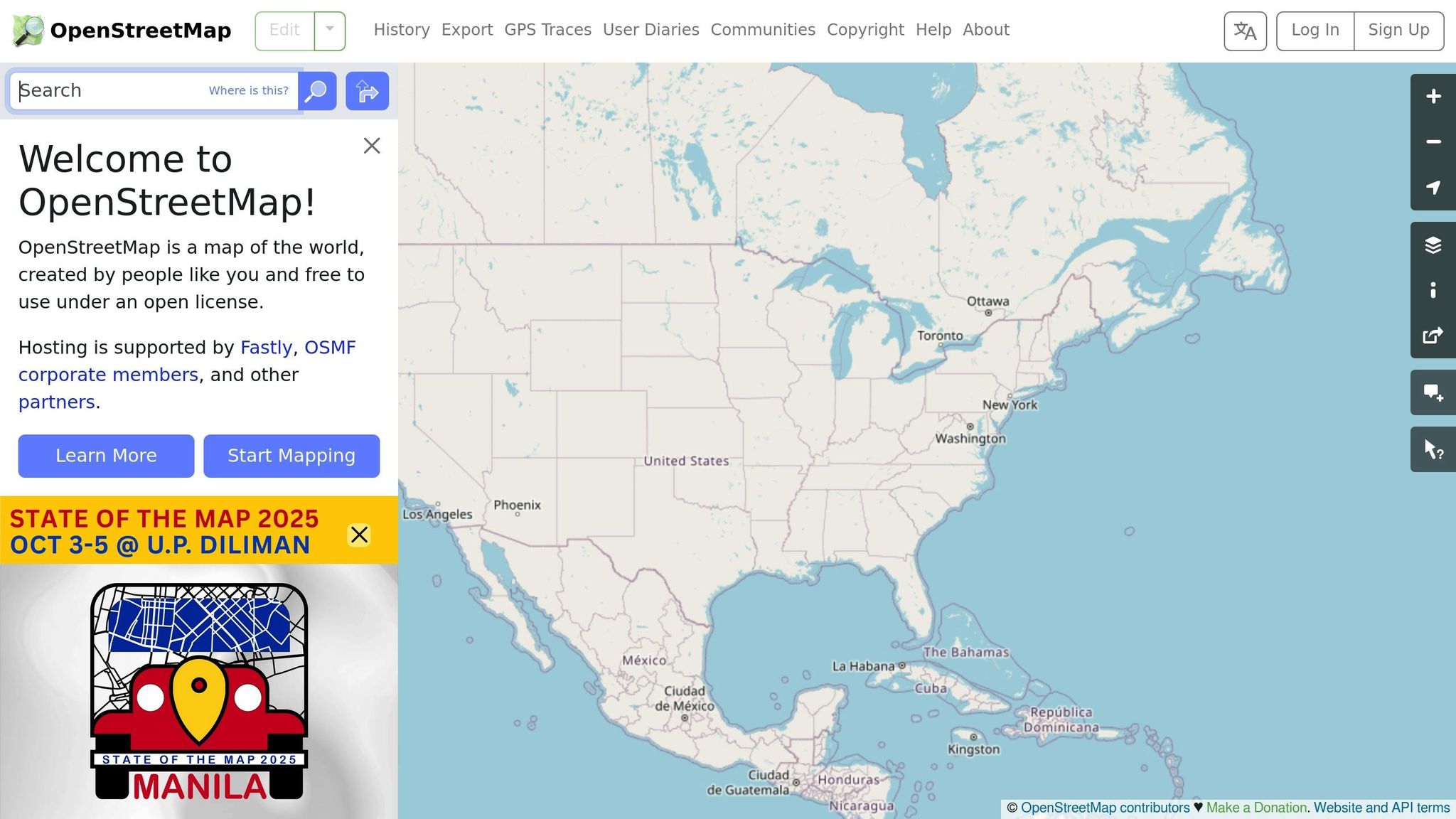
In addition to sources like CDS, NASA Earthdata, WorldClim, and DWD, OpenStreetMap (OSM) offers an impressive amount of local information that enables precise assessment of climate-related risks. OSM is much more than just a mapping platform—it captures a wide range of environmental parameters. By linking geographic and climate-relevant data, OSM provides a solid foundation for climate risk management.
OSM covers even the smallest local details worldwide. Especially in Germany, the platform is comprehensively usable and offers particularly detailed information in urban areas. A good example is the Climate Protection Map Germany, which is based on user-generated OSM data. It provides citizens with information on sustainable energy supply, mobility, and consumption in the context of climate protection. The data includes streets, railways, buildings, and land use, enabling precise classification of local climate zones and assessment of climate-relevant risks at the micro level.
A highlight of OSM data is the Global LCZ Map (Local Climate Zones), available at a spatial resolution of 100 meters. This map divides landscapes into seventeen classes—ten types for built-up areas and seven for land cover. While remote sensing images often provide continuous but less detailed information, OSM data excels with explicit details on buildings, land use, and infrastructure. Recent research has shown that integrating OSM data with climate models can improve urban heat island mapping and flood risk assessments (source).
Combining OSM data with tools like CLIMADA opens up numerous possibilities for climate risk management. They provide precise exposure data and improve the classification accuracy of local climate zones, enabling more detailed risk analyses. Companies can use this data to refine existing asset value layers, analyze detailed building data, or identify urban heat islands. This allows for targeted adaptation measures. This variety of data complements the sources already described and expands the toolkit for effective climate risk management.
OSM data is available under the Open Database (ODbL) license, which allows commercial use with source attribution. This license meets German requirements for open data and contributes to transparency in climate reporting. Integrating OSM data into German climate protection projects—such as the Climate Protection Map Germany—encourages citizens to actively participate in climate protection measures. Germany has enshrined environmental and climate protection as constitutional values, and the Environmental Information Act guarantees public access to environmental information. Using OSM data thus enables seamless integration of regional climate information into your risk management.
The five open-source climate data sources presented here differ in terms of geographical coverage, data types, and their suitability for German companies. To help you quickly find your way, we have summarized the key features of the data sources in the following table:
| Data Source | Geographical Coverage | Resolution | Main Data Types | Strengths | Limitations |
|---|---|---|---|---|---|
| Copernicus CDS | Global | Flexible | Temperature, precipitation, wind, sea level | Broad global coverage, high data quality | Requires advanced expertise |
| NASA Earthdata | Global | Flexible | Satellite data, earth observation, climate models | High-resolution satellite data, long time series | Also requires in-depth expertise |
| WorldClim | Global | 1 km × 1 km | Temperature, precipitation, bioclimatic variables | Very high spatial resolution, easy to use | No particular limitations |
| DWD Open Data | Germany/Europe | Station data to grid | Measurements, forecasts, radar, other climate data | Very precise for Germany, officially validated | Focused on Germany |
| OpenStreetMap Climate Layers | Global | Flexible | Local climate zones and land use information | Current and detailed user data | Quality varies by region |
For precise local analyses, DWD Open Data offers the best data for German companies. Global players, on the other hand, benefit from the comprehensive information provided by Copernicus CDS and NASA Earthdata.
All open-source data sources presented here provide a solid foundation for assessing climate risks and conducting robust analyses. Their reliability is recognized by international organizations such as the IPCC and the European Environment Agency (source).
By combining different data sources, both local and global climate risks can be comprehensively assessed. This helps companies better meet regulatory requirements.
For German companies, it is advisable to use DWD Open Data for local site analyses. For a European perspective, Copernicus CDS is ideal, while NASA Earthdata provides valuable insights into global supply chains. OpenStreetMap Climate Layers can supplement micro-local analyses, while WorldClim offers a solid basis for initial overview assessments. This combination enables effective climate risk management and meets a variety of requirements.
The use of open-source climate data is crucial for German companies. With current and transparent data, climate-related risks can not only be identified but also assessed and specifically mitigated. Especially in light of increasingly stringent regulatory requirements and ESG standards in Germany, this offers a clear advantage. Such standardized datasets form the basis for sound decisions and necessary adjustments.
The data sources presented provide reliable and consistent datasets that integrate seamlessly into legal frameworks such as the EU Taxonomy, CSRD, or German climate disclosure laws. This allows companies to precisely document their climate risk assessments while ensuring compliance with legal requirements.
A data-driven approach enables early identification of risks and targeted scenario analyses. Companies can thus quantify potential impacts, prioritize risk mitigation measures, and continuously monitor their progress toward sustainability goals. This not only increases transparency but also strengthens the trust of investors, customers, and regulators.
Moreover, using open-source solutions offers a strategic advantage: Given that over 90% of European digital infrastructure is controlled by non-European big tech companies, open-source climate data is gaining importance. It promotes digital sovereignty and reduces dependencies—a key step in line with Europe’s and Germany’s goals for innovation and competitiveness (source).
For startups and SMEs, this data is especially valuable as it is cost-effective and easily accessible. This enables even smaller organizations to conduct robust climate risk assessments and strengthen their position in terms of sustainability and resilience.
Take the next step: Train your teams, use these data sources, and firmly integrate climate analyses into your processes. Collaborating with experts and participating in conferences or professional forums will help you stay up to date and benefit from best practices. Companies that act wisely and with foresight today secure a decisive competitive advantage—and open-source climate data is a key part of that.
Open-source climate data sources offer you a cost-effective way to manage climate risks. Since this data is generally available free of charge, smaller companies or startups in particular can benefit from lower costs. This makes it easier and more accessible to get started with effective climate management.
Another major plus is transparency: Open access to the source code allows you to trace the origin and processing of the data in detail. This ensures that the information is trustworthy and accurate. This reliability makes it easier to seamlessly integrate the data into your internal processes.
An additional advantage lies in fostering collaboration and ongoing development. Open-source data sources are often supported by an engaged community that continuously works on improvements. For companies that want to remain flexible and forward-thinking, they are a valuable resource. According to the Open Data Barometer, open data initiatives have accelerated innovation and improved public sector transparency globally (source).
To determine the right climate data sources for your company, you should first clearly define your specific requirements. Consider whether you need only climate-related data or whether ESG aspects (environmental, social, and governance) are also relevant to you. Clear objectives are crucial here, as they greatly simplify the selection process.
When evaluating potential data sources, several criteria are key:
Additionally, it’s important that the data is presented in a user-friendly format. Only then can you use it effectively to make strategic decisions in climate risk management. A structured approach to selection will help you find the best sources for informed decisions. The European Commission’s guidelines on climate-related disclosures recommend using open and standardized datasets for comparability (source).
Open-source climate data sources provide companies with reliable and transparent information to help them assess and disclose their environmental and sustainability performance. Such data plays a central role in meeting the requirements of the EU Taxonomy and CSRD. They support the classification of economic activities as sustainable and enable precise ESG reporting.
With these data sources, companies can not only fulfill their regulatory obligations but also better align their strategic decisions with the EU’s sustainability goals. This helps to integrate climate risks more strongly into corporate strategy in the long term and to actively drive sustainable business practices. According to the European Financial Reporting Advisory Group (EFRAG), open data is essential for meeting the transparency and comparability requirements of the CSRD (source).

ESG & sustainability consultant specializing in CSRD, VSME, and climate risk analysis. 300+ projects for companies like Commerzbank, UBS, and Allianz.
More aboutClimate risks cost Germany billions every year. Companies must integrate these risks into their...
Starting in 2026, new standards for climate risk analyses will apply in the EU: ISO 14091 and the ...